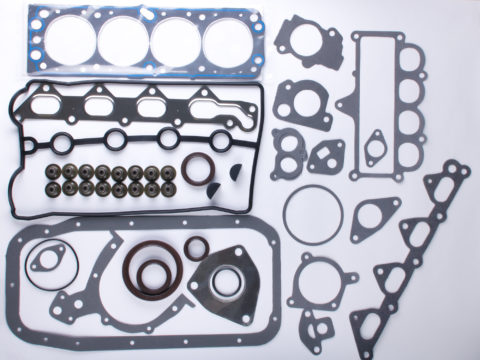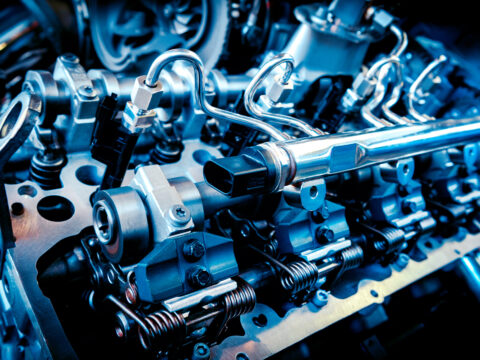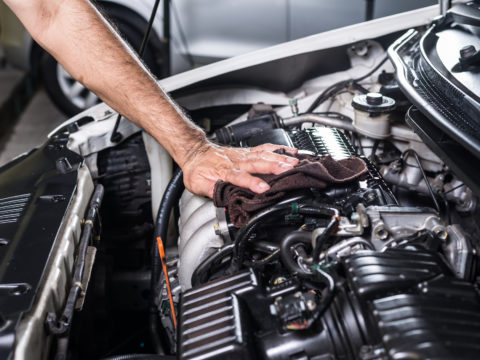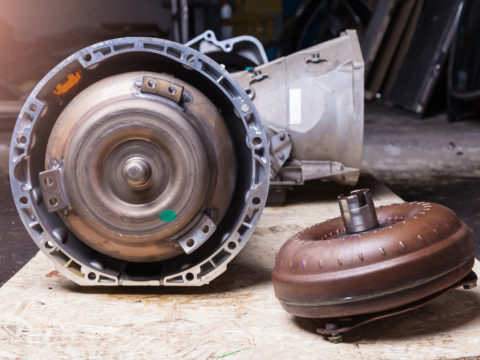When your car cranks and then fails to start, there’s an uncomfortable moment. No one likes that feeling, and most people would probably avoid it at all costs if they could. There are some really simple reasons why your car might be struggling to start and others that need a little more concentrated attention.
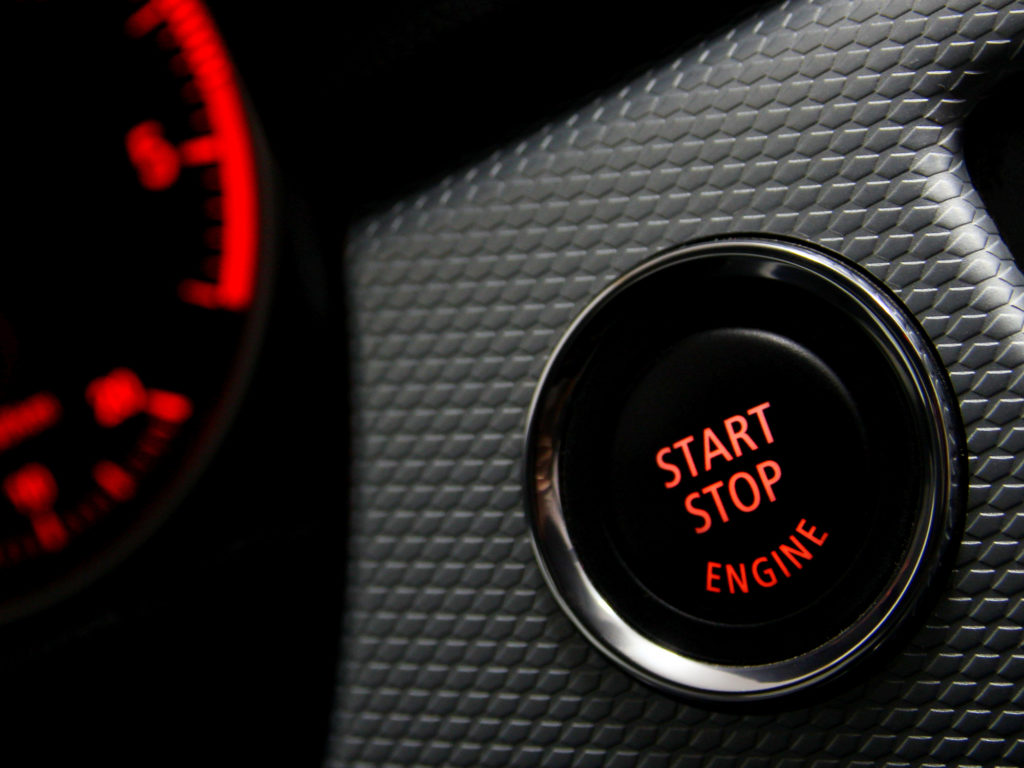
Contents
What Does It Mean When Your Car Cranks But Won’t Start?
When your car cranks but won’t start, it could mean a couple of different things. You could have a problem with the spark, usually brought about by the engine flooding or a faulty crank position sensor.
You could also have clogged fuel injectors. If your car cranks, but it won’t start, it’s possible that the engine isn’t getting enough fuel. If your fuel injectors are dirty or rusty, they can easily clog and make starting your car a veritable nightmare.
There’s also a possibility that you could have a bad fuel pump. Your fuel pump can go bad because of faulty or dirty gasoline. When this happens, your car loses gas flow, and you won’t be able to go anywhere until you get the problem situated.
If your car cranks and won’t start, it could be that your vehicle is experiencing compression problems. This usually happens when air from the combustion cycle leaks, preventing it from spinning the crankshaft with enough power to get going.
A car cranking and not starting could be caused by several factors. There’s no telling what’s wrong with your car until you take it to a professional, but there are a few things you can do to try and diagnose the problem on your own if you’re feeling confident.
How Do You Diagnose a Car That Cranks But Won’t Start?
If you ever run into a problem with your car starting, the first thing to do is check for gas. It seems simple, but it’s the quickest thing to check off your list. There’s no reason to go through the trouble of calling a mechanic if all you need is to put gas in the car’s tank.
Of course, if you have plenty of gas, then you need to work through some other possibilities. If you have over 200,000 miles on your car and you haven’t taken it in for a fuel system service checkup lately, there may be something wrong with your fuel pump.
If you live somewhere where the weather frequently drops below freezing for consecutive amounts of time, you might need to consider that a line is frozen. Usually, this happens if you don’t keep enough fuel in the tank or regularly start your car.
But some places are cold enough that the fuel lines can simply freeze. If your car cranks, but it won’t start, and the weather has been particularly cold, you might consider the fact that something inside your fuel system is frozen.
Whatever is causing your car to crank but not start, there are a couple of steps you can take to diagnose the problem and potentially figure out a solution.
Check for Gas
If your car is out of gas, it won’t start. It doesn’t matter how vigorously you try to get it going; it’s just not going to happen.
Always check your car for gas. This is a simple problem with a simple solution that you can usually handle without spending thousands of dollars at the mechanic.
Make Sure Your Fuel Pump Turns On
If your fuel pump isn’t turning on or getting enough gas, you won’t be able to start your car. The pump won’t push enough gas through the line to get the car started.
You can usually hear your fuel pump if you turn the ignition to the “on” position. You should hear some whirring sound when you turn your key. If you don’t hear anything, it’s probably the issue.
Check Your Battery
A dead battery has slowed many good drivers from getting to work on time. Most drivers have probably experienced jumping their car, so they can make it to the important meeting or get home before dinner gets cold.
If your car doesn’t start, check your battery. If it’s old or has already been giving you problems, it might be time to replace it.
Check the Spark Plugs
As we’ve already established, if you’re having trouble with your spark plugs, you’re going to have trouble getting your car started.
Checking your spark plugs regularly is the best way to ensure you never end up with dead ones. If you have plenty of gas and the car still won’t start, it could be the spark plugs.
Check the Fuel Injectors
Bad fuel injectors will prevent enough gas from getting to the engine, which will prevent your car from starting.
There’s a simple way to check if you’re having trouble with your fuel injectors: remove the air cleaner and take a big sniff.
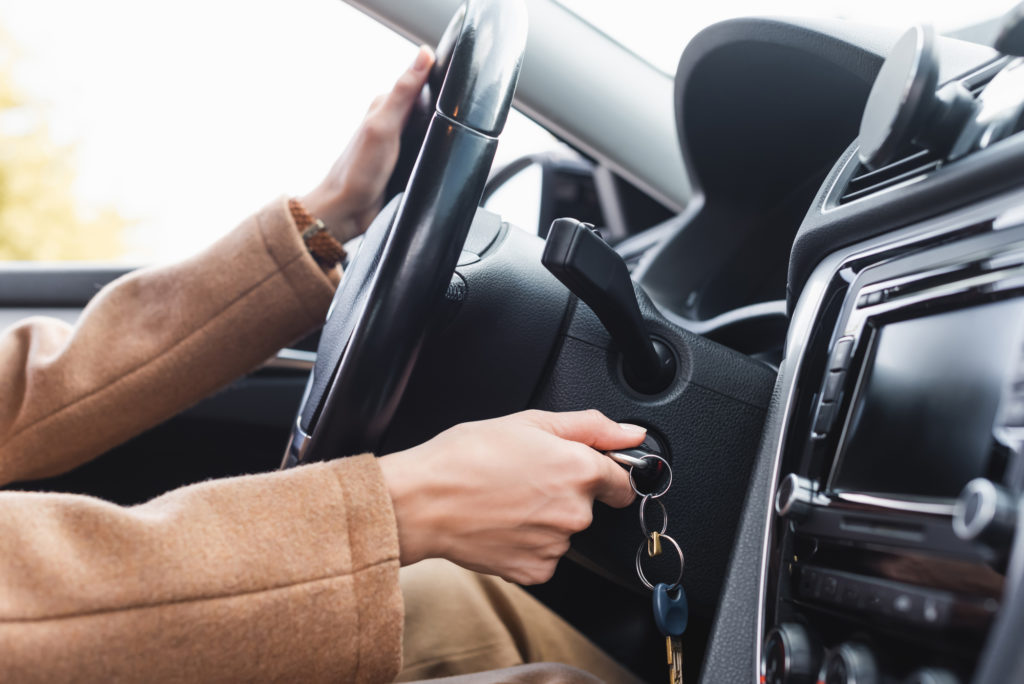
How Do You Fix a Car That Cranks But Won’t Start?
When your car cranks but won’t start, there are some things you can do to try and fix it. Many of the things we’ve already discussed require the attention of an expert, but there are some things you can do on your own.
Your Car Is Out of Gas
If your car is out of gas, you won’t start it. It’s not rocket science; it’s just a simple truth. People run out of gas without realizing it sometimes, so you should always check your gas tank before moving on to a different problem.
How to Fix It
If you run out of gas, you need to find a way to get gas. Some people keep spare gas in cans in a shed, or some people might siphon gas from the tank of a second vehicle. If you need to call a tow truck, do that immediately.
Your Battery Is Dead
When your car battery dies, your engine might still crank, but it won’t start. There are a couple of things you can do when this happens.
How to Fix It
The most efficient method to fix a dead battery is to get a new battery. Your local mechanic should be able to get you a tow so they can replace the battery. Or you can call a friend with jumper cables and have them come over.
Let your car run a little while it’s connected to your friend’s car, so your battery has time to charge.
Your Alternator Is Dead
If you get a friend to jumpstart your car and it doesn’t work, or your car dies again shortly after, there could be problems with the alternator.
How to Fix It
You could get the alternator replaced or buy the parts and install it yourself if you’re adept at car repairs.
Bad Spark Plugs
You probably won’t be able to start your car at all. If your car doesn’t start, you experience rough acceleration, or you have a rough idle, you probably have bad spark plugs. You won’t get very far in your vehicle if you have bad spark plugs.
How to Fix It
You can have your spark plugs replaced by a mechanic, or you can purchase a set and do it yourself. Spark plugs are fairly easy to fix if you know what you’re doing or if you know someone who knows what they’re doing.
Bad Fuel Injectors
Bad fuel injectors will make it difficult for your car to start. It may crank, but you probably won’t be able to get on the road. Whether they’re bad or just clogged, you’ll have to remove them to see what’s going on.
How to Fix It
You can remove the fuel injectors yourself to clean them if they’re clogged. If they’re bad or damaged, you’ll need to replace them. You can purchase cleaners made specifically to clean out fuel injectors, making the process much more simple than it seems.
Your Fuel Pump Isn’t On
A car that cranks and won’t start could be a car that isn’t getting enough fuel through the pump. If there’s a problem with your fuel pump, you can replace it on your own without much hassle.
How to Fix It
Replacing a fuel pump yourself is pretty easy. And it’s more cost-effective than taking your car to the mechanic. You can pull the fuel pump through the access door without draining your gas tank. Just make sure your car is off when you do this.
Frozen Fuel Lines
If your car doesn’t start, it may be related to your fuel lines somehow. As we’ve discussed, frozen fuel lines are a serious concern when you live somewhere with frigid temperatures.
How to Fix It
You need to warm your car if your fuel lines are frozen. A portable heater under the hood is a good place to start. Make sure your gas tank is full and once your car is warm, try turning it on again. If it starts, let it run for a while to make sure it stays thawed.
What Do You Do if Your Car Cranks But Won’t Start Completely?
If your car cranks but won’t start completely, you need to figure out what’s wrong with it. There are some easy ways to diagnose the problem yourself, or you can call an expert for help.

